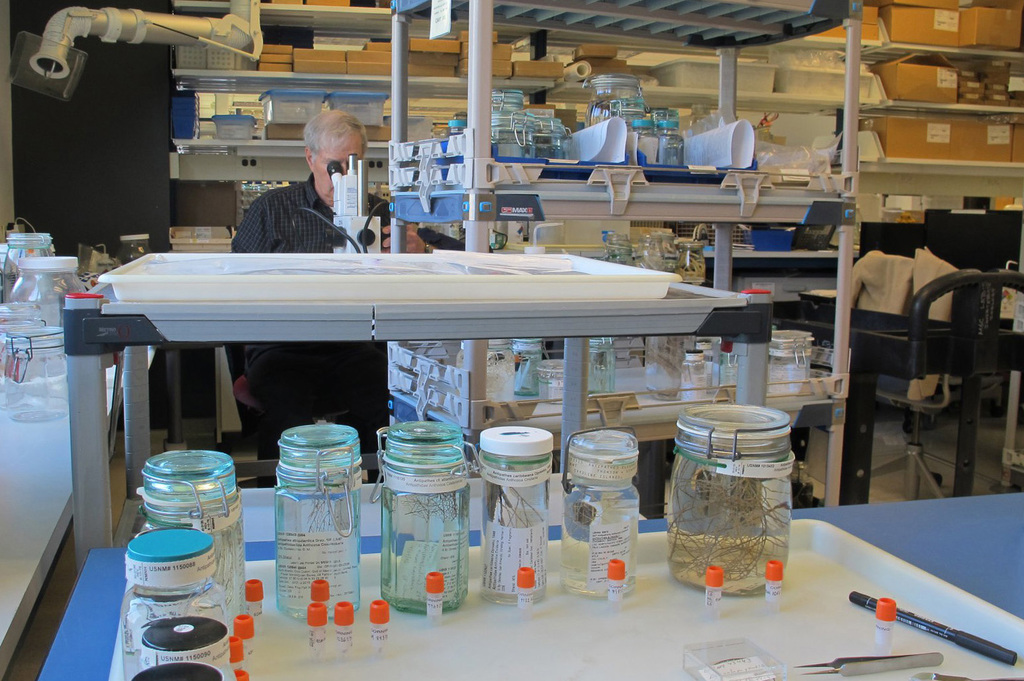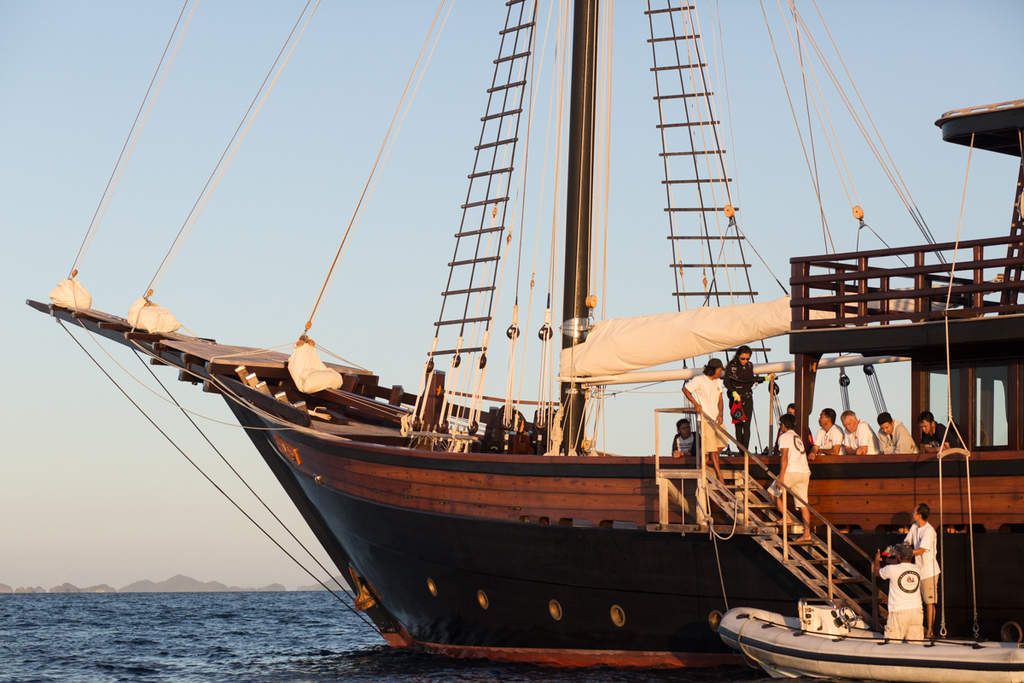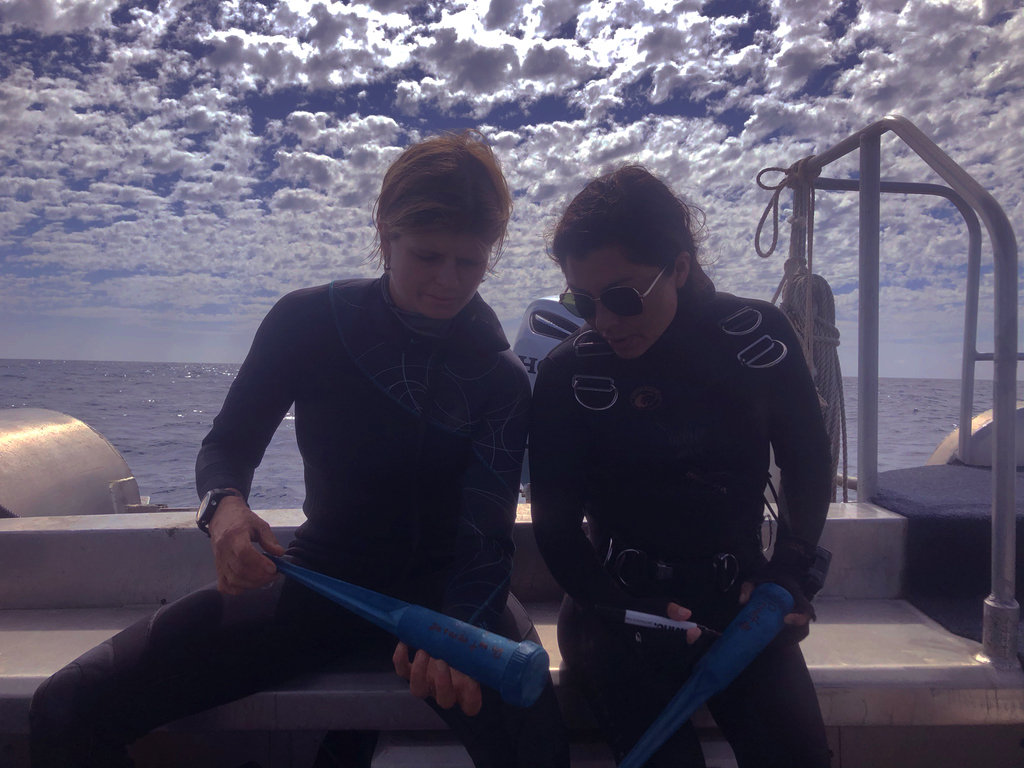Blog:
An interview with Erika Gress
2021, July 15
Posted by Pim Bongaerts
My research interests are the ecology and community dynamics of mesophotic reefs and the deep sea (bathyal zone). I am currently focusing on the ecology, phylogeny and population dynamics of corals in the order Antipatharia (black corals). I love the feeling of exploration and I am also very interested on innovative techniques/technologies for assessing marine ecosystems.
Early Career Scientist: Erika Gress
How do you pronounce “mesophotic” – ‘mee-so’ or ‘meh-so’ -photic?
I pronounce it ‘meh-so photic’.
Are you more interested in charismatic megafauna or scouring the benthos for cool creatures?
Definitely scouring the benthos for cool creatures.
What is your primary research interest, and how does it link with the mesophotic zone?
My primary research interest is in fact the mesophotic zone, and while studying this depth zone I realised how relevant antipatharians (known as black corals) are. They are important in terms of supporting marine biodiversity for shallow, mesophotic and deep-sea reefs. Nonetheless, antipatharians are highly understudied compared to other corals, and there are many misconceptions about them. I am therefore focusing my research on these fascinating and enigmatic corals, with a current focus on (i) providing quantitative evidence of their role as ecosystem engineers, (ii) species delimitation within the family Antipathidae, and (iii) the quest to sequence a whole-genome of an antipatharian.
Describe the location of your main (or most interesting) study site and how it fits in with your research questions.
I am currently conducting research on an iconic site: The SS Yongala, a shipwreck located in Queensland, Australia. This important heritage site acts also as an ‘artificial reef’ and hosts outstanding marine biodiversity including a high abundance of antipatharians. One of the main objectives of my research at the Yongala is to quantify the amount of structural habitat antipatharian corals provide, as well as the abundance and diversity of other fauna (fish and macro-invertebrates) associated with the corals. In addition, I will use molecular and morphological methods to assess the diversity of antipatharians and scleractinians (hard corals) living on the wreck, and I am also collecting data of some fine-scale environmental parameters. Then this information could be compared with other reefs where antipatharians are also very abundant. Another very interesting area where I was planning on conducting research (before Covid-19) is Indonesia. There, shallow and mesophotic reefs have the most impressive diversity and abundance of antipatharians I have ever seen – one day!
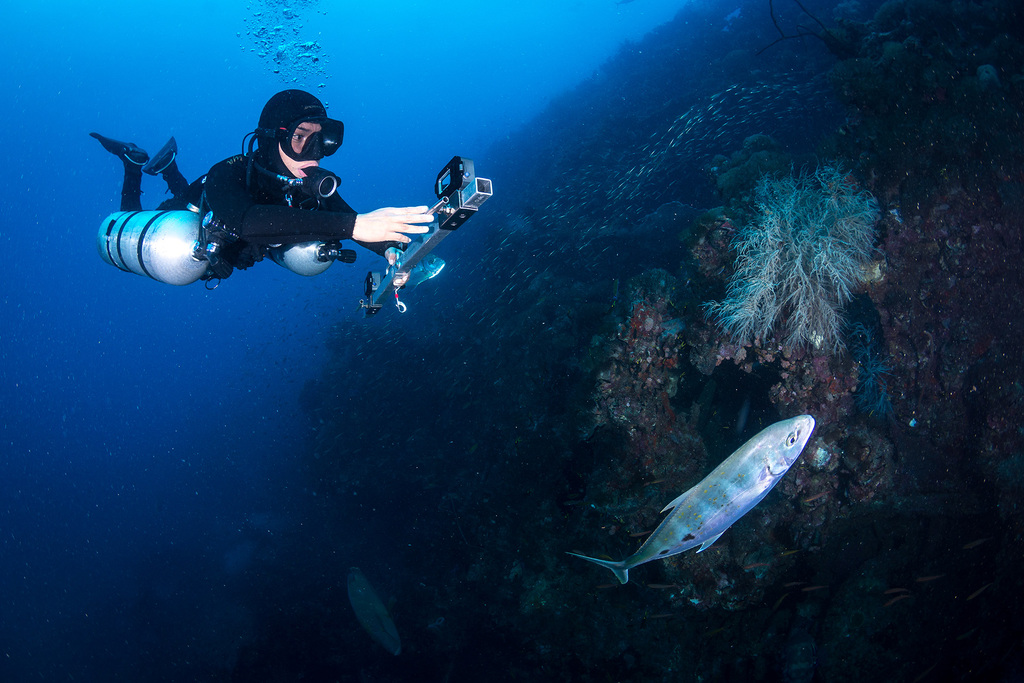 Erika Gress conducting surveys at the SS Yongala
(C) Matt Curnock
[CC BY-NC 4.0]
Erika Gress conducting surveys at the SS Yongala
(C) Matt Curnock
[CC BY-NC 4.0]
What is your primary means of accessing mesophotic depths to conduct your research (e.g. ROV, SCUBA, rebreather, submersible) and what were the main challenges to overcome?
Most of the research I have conducted at mesophotic depths has been using mixed gas. Yet, I have had the opportunity to cover all the mesophotic depth range (30–150 m) – and beyond – on submarine dives a few times. Those dives in the submarine were a fantastic opportunity to see the transition from shallow to mesophotic to deep reefs on a single dive. However,submersible dives are not a common option. In my opinion, rebreathers are the most practical and cost-effective way to survey mesophotic reefs. The initial investment for acquiring one and the restrictive regulations regarding technical diving that many institutions have (particularly in Australia) are currently the main constraints. This currently increases the cost of surveying reefs beyond 25 m depth, since many more dives are required given the restricted bottom times.
What do you remember from your very first exposure to coral reef or mesophotic fieldwork?
The most memorable moments were on walls that plunge down to a few hundred meters. Looking down for a quick glimpse into the abyss and then up to a considerable amount of water - next to a colourful and nicely decorated wall – is astounding.
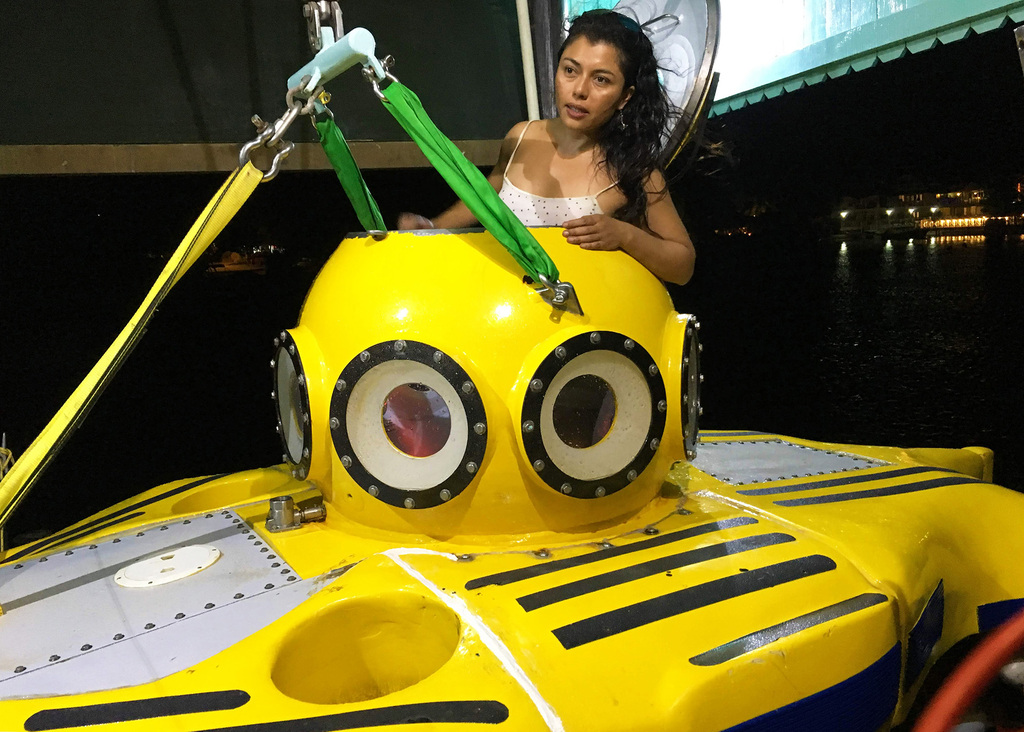 Erika Gress after completing a survey in the submarine Idabel
(C) Karl Stanley
[CC BY-NC 4.0]
Erika Gress after completing a survey in the submarine Idabel
(C) Karl Stanley
[CC BY-NC 4.0]
What new skill(s) have you learned during your research and what is one thing (skill, program, advice, etc.) that you wish you learned earlier in your science journey?
I really wish I had learned bioinformatics earlier. It is a challenging skill to acquire, but it is also very exciting and it opened a completely new perspective and options for answering some of the most fundamental questions about the corals I study.
How do you keep current with an endless stream of research coming out (or any favorite science website or blogs that you follow)?
To keep up to date on topics related to my research I use Google Scholar, I follow specific researchers and their ‘new related research’. I really enjoy listening to the podcast ‘New Scientist Weekly’ for general science updates.
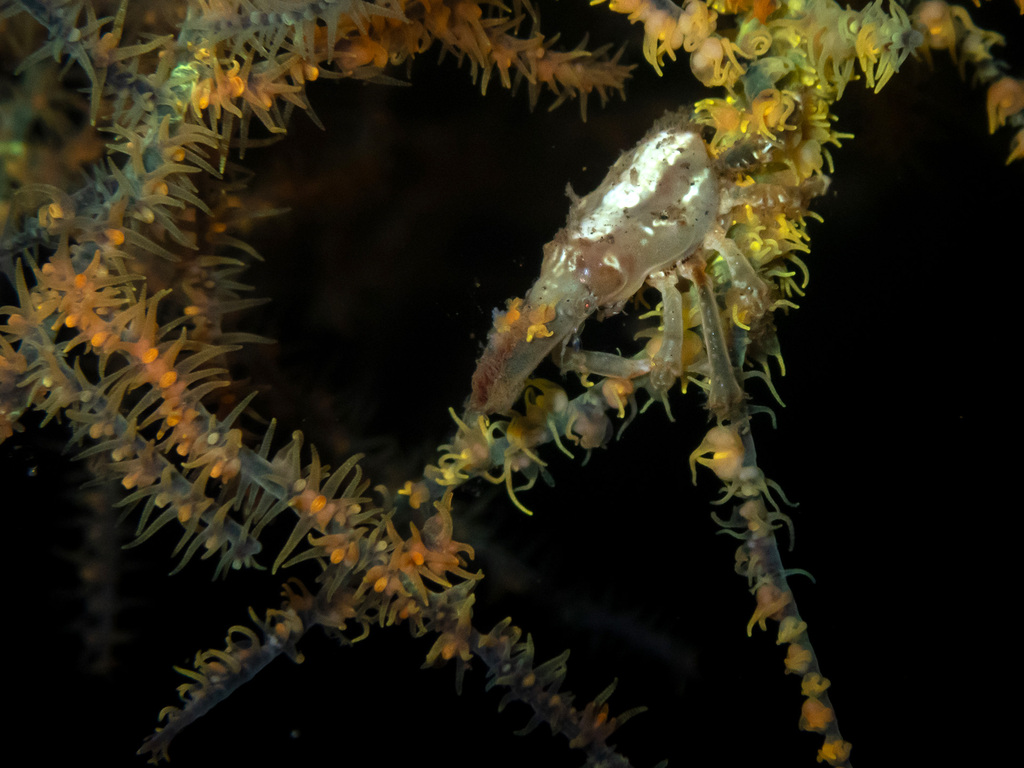 An Antipathes cf. curvata and a common invertebrate associated (Xenucarcinus sp.)
(C) Erika Gress
[CC BY-NC 4.0]
An Antipathes cf. curvata and a common invertebrate associated (Xenucarcinus sp.)
(C) Erika Gress
[CC BY-NC 4.0]
.png)
